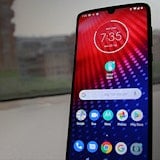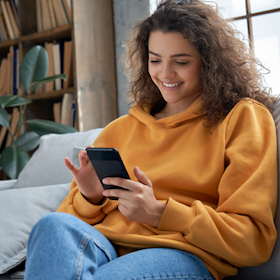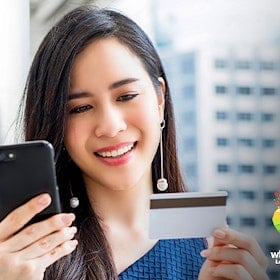
One of our favorite new Android features shown off at Google I/O took only a few seconds to demonstrate, but we still got excited. Personal Unlocking is its name, and it’s a way to keep your phone secure without having to bother with a password.
The general gist of it is that Android “L”, the working title of the next Android iteration, will be able to detect nearby Android devices also owned by you. It’s up to you to pick and choose which of these devices is authorized, but once one is all you have to do is be close to it and you’ll skip the password screen all together.
This would be hugely handy for anyone with an Android smartwatch, two of which actually went on sale today. Alternatively you could authorize one of the new Android-running TVs that is on its way, your Chromebook, Android tablet, or anything else compatible.
That way you could get fast access to your phone when at the office or at home, where it’s safe, but not when out in public.
Small feature, big usability
The problem with a lot of these big yearly announcements is that so few of the excitingly-framed features ever end up getting used. A great example is the last time Google tried something like this with Face Unlock, where all you had to do was look at the front-facing camera so it could recognize you. It was a nice idea that failed phenomenally and after a short while was never spoken of again.
Personal Unlocking has the potential to actually work. If all that is required is proximity, and if you can set what that proximity is, then there are a few common situations, social and otherwise, that would benefit.
Everyone has at least one friend that can’t be trusted around other their phone. With a proximity-based unlock feature you could be out of the room attending to something else, free in the knowledge that your usually-open phone is now locked and secure.
The same would be true if you left your phone on a bus. While Personal Unlocking wouldn’t help you get your phone back, at least no strangers would be rifling through your personal stuff with access to all of your accounts.
The great thing about Personal Unlocking is that it’s a feature that you could use every single day and forget that it was even there. These are the best kinds of features: the ones you use all the time but forget are even there.
Google estimates that Android users pull their phones out to check them an average of 125 times per day. That’s a lot of password typing that you could forgo just by owning an Android smartwatch.
No celebrations yet
Admittedly, the demonstration was a little odd. The two devices used were a phone and a smartwatch. When the speaker was wearing his watch he had free access, once he took it off and handed it to an assistant he henceforth needed to put in a password.
Just how exactly his phone knew that his watch had moved only metres away was not mentioned.
You might be tempted to say NFC (Near Field Communication) is the key, which is built in to every Android device. However, according to Android Developers, NFC typically requires 4cm of proximity to initiate a connection, after which Bluetooth is often used for the actual data transfer.
If NFC is required then you’d have to tap your phone to your watch (or other authorized device) to forego the password, which wouldn’t be optimal and certainly wasn’t in the demonstration.
If the secret is detecting it’s whether or not a Bluetooth connection can be sensed from authorized devices then the range would be far enough that our “leaving the room” example would be inaccurate. The range would extend for half or most of a common household, raising the question of how the on-stage demo was successfully performed at all.
Of course, there could be some totally new piece of hardware coming to Android devices that will sense proximity. That would be unfortunate, as it means current devices could never support Personal Unlocking, which also makes it very unlikely.
Hopefully Google has figured out a way of judging the distance between two devices that we’re totally ignorant of and we can once and for all skip typing in passwords without sacrificing our device’s security.
Related Articles
Find Better Phones and Plans
Hundreds of cell phone plans unpacked. All the facts. No surprises.



































